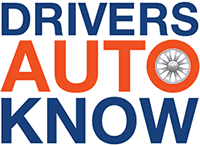I wish every driver who entered my shop had a great experience. Most of them do. But when you’re working with automobiles—complicated machines just like people! —accidents happen. Parts malfunction. People mess up. Drivers misunderstand. Service advisers misspeak. You can’t avoid it.
I’ve been in the auto industry for over 40 years. I’ve lived through all kinds of ways to “get the job done.”
I am a stickler for quality control and have policies and procedures in place as a business owner to maintain a high standard. Still, some problems slip through the cracks. For instance, one of my customers needed a new rotor.
We replaced it and got him back on the road. A few days later, he called with a concern. His car was making an unnerving noise. When he drove slowly, there was a scraping sound. I asked him to come by the shop so we could do an inspection. Turns out the backing plate was touching. I had the driver wait and apologized for the inconvenience.
Another one of my customers needed brakes and rotors. A few weeks later, he returned with a complaint. At high speeds, hitting the brakes caused a vibration. One of the rotors was defective. He wasn’t too upset since the manufacturer was at fault. I made sure he understood there wouldn’t be additional charges for the extra labor.
Unfortunately, there isn’t always another person or part to blame. Some accidents occur under your own roof, and the buck stops here. Regardless of the circumstances, it’s best to own up to the situation. A few weeks ago, I “skipped a step.” One of my best friends texted me that her mom’s car (you already know this is going to be a doozy) broke down on her way to lunch; she was having it towed in and wanted me to get it back to her the same day. A small communication error is all it took to cause a huge mess.
The original repair was a blown hose. That caused the engine to run hot. Simple job (or so I thought). We put in the hose, filled her up with coolant and sent her on her way. The next day, she went to her car and there was white smoke. Turns out the car needed a head gasket, too. Now, she’s stuck again. My intentions were good, but skipping one simple step made all those intentions null and void.
Sometimes a technician is too optimistic about how long a repair will take. An example: “Sure, wheel alignment? No problem. Hang out in the lobby. We’ll be done in an hour! “Making a promise like that is a bad move if the rack was occupied by another vehicle with a strut job on it. Two hours passed and the driver got irritated. Three hours passed, he made it known he was irate, took his car and left.
Now our mantra is: “For happy customers, under promise and overdeliver!”
It stinks that we lost a customer, but it was for the greater good since I was able to stress the importance of clear communication.
One thing I’ve learned is the importance of clear communication and setting realistic expectations. Recently, a customer came in asking for a “tune-up,” a phrase that doesn’t mean much in modern cars. Instead of clarifying what the customer needed, my service advisor proceeded with a general inspection, leading to confusion and frustration when we discovered a more significant issue with the brakes.
These experiences highlight the need for transparency and proactive communication. By taking ownership of mistakes and striving to improve, we can ensure better outcomes for our customers in the future. While accidents are unavoidable, our response and commitment to quality service can make all the difference.

